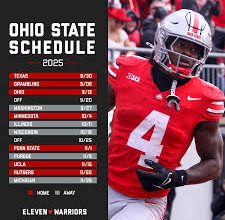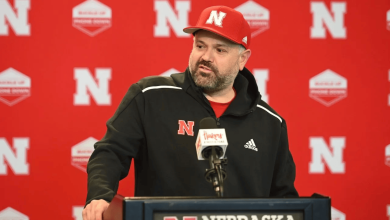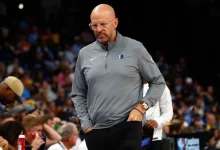Following the release of DeMarcus Walker, the Chicago Bears are not anticipated to go aggressive in the DE market.

Following the Release of DeMarcus Walker, the Chicago Bears Are Not Anticipated to Go Aggressive in the DE Market
In an offseason that has been filled with changes and reshuffling for the Chicago Bears, one of the more recent developments has been the release of defensive end DeMarcus Walker. As the Bears make adjustments to their roster, particularly in the defensive line, the question arises as to how the team will approach the defensive end (DE) market in the lead-up to the 2025 season. Given the dynamics of their current roster, salary cap situation, and overall team strategy, the Bears are not expected to make a significant push for high-profile free agents or trade targets in the DE market.
While DeMarcus Walker’s release has certainly drawn attention from fans and analysts alike, it also signals a shift in the Bears’ philosophy moving forward. Instead of aggressively pursuing big-name defensive ends, the Bears appear to be opting for a more measured approach, one that relies on developing their current talent and addressing other pressing needs on the roster. In this article, we will explore the reasons behind the Bears’ decision to step back from the DE market, what their defensive line looks like for 2025, and how they are planning to build their defense for the future.
The Impact of DeMarcus Walker’s Release
DeMarcus Walker was a player who had been with the Bears for a few seasons and had contributed to the team’s defensive line rotation. However, after his release, there are a number of factors to consider. Walker, although a solid contributor, did not fully live up to the expectations that the Bears had for him when they signed him in 2023. His production on the field did not make the type of impact the Bears needed to push them into playoff contention, and his release likely comes down to both performance and financial considerations.
Walker’s departure clears cap space for the Bears, but more importantly, it signals a shift in how the team plans to allocate resources. By parting ways with Walker, the Bears are sending a message that they are ready to move forward with a more dynamic and youthful defensive line. This shift is indicative of a larger, more long-term approach to roster building, where investing heavily in one particular position might not be the smartest use of their resources in 2025.
Bears’ Current Defensive Line Composition
As the Bears prepare for the 2025 season, their defensive line will play a critical role in their success. With Walker’s release, the team now finds itself with a more open rotation at defensive end, but the primary focus will likely shift to developing the players already on the roster and continuing to build depth.
The defensive line remains a key area of importance for the Bears, particularly with the need for more pressure on opposing quarterbacks and bolstering their run defense. However, rather than seeking out a high-profile free agent to fill the gap left by Walker, the Bears are likely to continue developing their in-house talent and look for opportunities to bring in depth pieces through the draft or low-cost free agency.
- Trevis Gipson
One of the key players the Bears will rely on at the defensive end position is Trevis Gipson. Gipson, a former fifth-round pick, has shown flashes of potential but has yet to fully emerge as a consistent contributor. As the Bears look to rebuild their defensive front, Gipson will be expected to take on a more prominent role in 2025. With the right coaching and experience, Gipson could take the next step and become a key part of the defense, especially if the Bears are willing to give him more snaps in a starting capacity.
- Dominique Robinson
Dominique Robinson is another player to keep an eye on. A former wide receiver turned defensive end, Robinson has been one of the more intriguing developmental prospects on the Bears’ roster. He’s shown enough potential in limited action to warrant further evaluation and perhaps a larger role in 2025. The Bears have been patient with Robinson, understanding that his transition to defensive end will take time, but if he can continue to develop his pass-rushing skills and increase his consistency, Robinson could emerge as a valuable contributor to the defensive line.
- Zacch Pickens
Although Pickens is primarily seen as a defensive tackle, his ability to work on the edge of the defensive line could provide valuable depth at defensive end. The 2024 draft pick will likely continue to grow in the Bears’ defensive scheme, and his versatility could make him a key rotational piece in 2025. Pickens’ strong run-stopping ability and inside pass-rush potential could complement the Bears’ defensive line, especially as they look to bolster both their run defense and overall pass rush.
- Justin Jones
Justin Jones is a veteran presence on the defensive line and could be a significant piece in the rotation. While his role is more focused on the interior of the line, Jones’ leadership and experience will help guide the younger players and bring stability to the group. His presence will be key as the Bears continue to develop a defensive front that can compete at a high level.
Bears’ Salary Cap and Roster Construction Philosophy
One of the main reasons the Bears are not expected to go aggressive in the defensive end market in 2025 is their salary cap situation and their overall roster construction philosophy. The Bears are in a phase of rebuilding and recalibrating their roster, focusing on long-term sustainability and maximizing their financial flexibility. With the rise of key players on offense, such as Caleb Williams, and a need to build up other positions, the Bears are reluctant to tie up large amounts of cap space in one position, particularly one that hasn’t been an area of extreme need for the team.
Instead of aggressively pursuing top-tier free agents, the Bears are likely to focus on building depth at key positions, developing their current roster, and investing in positions that need immediate attention. For example, while the defensive line is important, it’s not the only area where the Bears must allocate resources. The team has several other needs, such as in the secondary, offensive line, and wide receiver corps, and may decide that spending on a high-profile DE in free agency is not the best way to use their financial resources.
The 2025 NFL Draft: Adding Depth at Defensive End
Another reason the Bears are not expected to make a big splash in free agency for a defensive end is their focus on the 2025 NFL Draft. With a solid draft position, the Bears are in a prime position to bring in young talent to continue building their roster. The 2025 draft features some promising defensive prospects, and the Bears could look to add a developmental edge rusher who can contribute in the future.
The Bears’ front office has shown an ability to scout and develop talent through the draft, and this could be their preferred route to improving the defensive line. With several options available in the draft and the emphasis on acquiring players with high upside, the Bears may feel that bringing in a rookie defensive end to develop behind their existing players is a more prudent move than signing a veteran free agent.
The Bigger Picture: Long-Term Development
Ultimately, the Bears’ approach to the defensive end market in 2025 is part of a larger, long-term vision for the franchise. The team has a new direction under head coach Matt Eberflus, and the focus is on building a solid foundation through smart roster management, player development, and financial flexibility. Rather than committing large sums to a position that has not been a critical area of weakness, the Bears are taking a more conservative approach, hoping to develop their in-house talent and address other roster needs.
As the 2025 season unfolds, it’s likely that the Bears will continue to evaluate their defensive line closely. While it may not be an area they target aggressively in free agency, the team will certainly look for opportunities to add pieces that can contribute to the future. Whether that comes through low-cost signings, trades, or through the draft, the focus will remain on building a sustainable, competitive team that can contend for the long haul.









